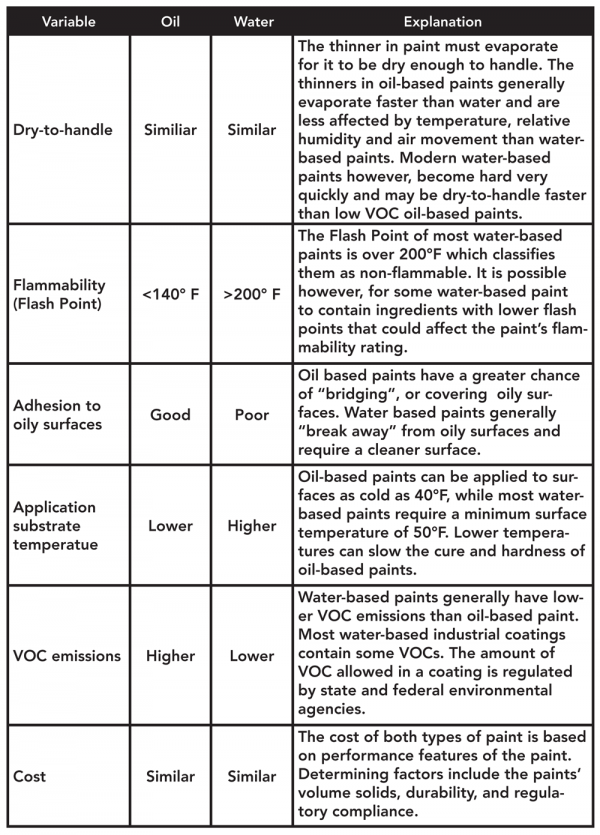The distinction between oil-based versus water-based paints was established when latex house paints were introduced in the 60’s. Until that time, architectural and industrial paints and equipment could not be thinned or cleaned up with water, but instead required a solvent-based thinner. Most of these thinners are derived from petroleum products and the paints that contained these thinners are known as “oil-based”.
Latex paints made a huge change in the market because they could be thinned with water, and equipment clean-up became much easier and faster.
All paints contain some thinner that is added at the factory. The thinner, either an oil-based solvent or ordinary water, is added to thin, or reduce the factory mixture so the paint can be brushed, rolled, or sprayed.
There are other differences between oil and water-based paints besides their obvious chemical makeup:
- Ambient temperature conditions differ on how or when they can be applied and stored, with water-based paints being more restrictive.
- Water-based paints are generally more environmentally friendly and are a consideration when dealing with regulatory requirements, waste management, air quality, or worker safety.

 Table comparing oil-based and water-based paint features
Table comparing oil-based and water-based paint featuresCarbit Paint produces both oil-based and water-based paints for a wide range of industrial uses. For more information when comparing your options, call 312-280-2300 and ask for Dave Westerman Jr. (ext 312) or Bob Lyons (ext 344).
